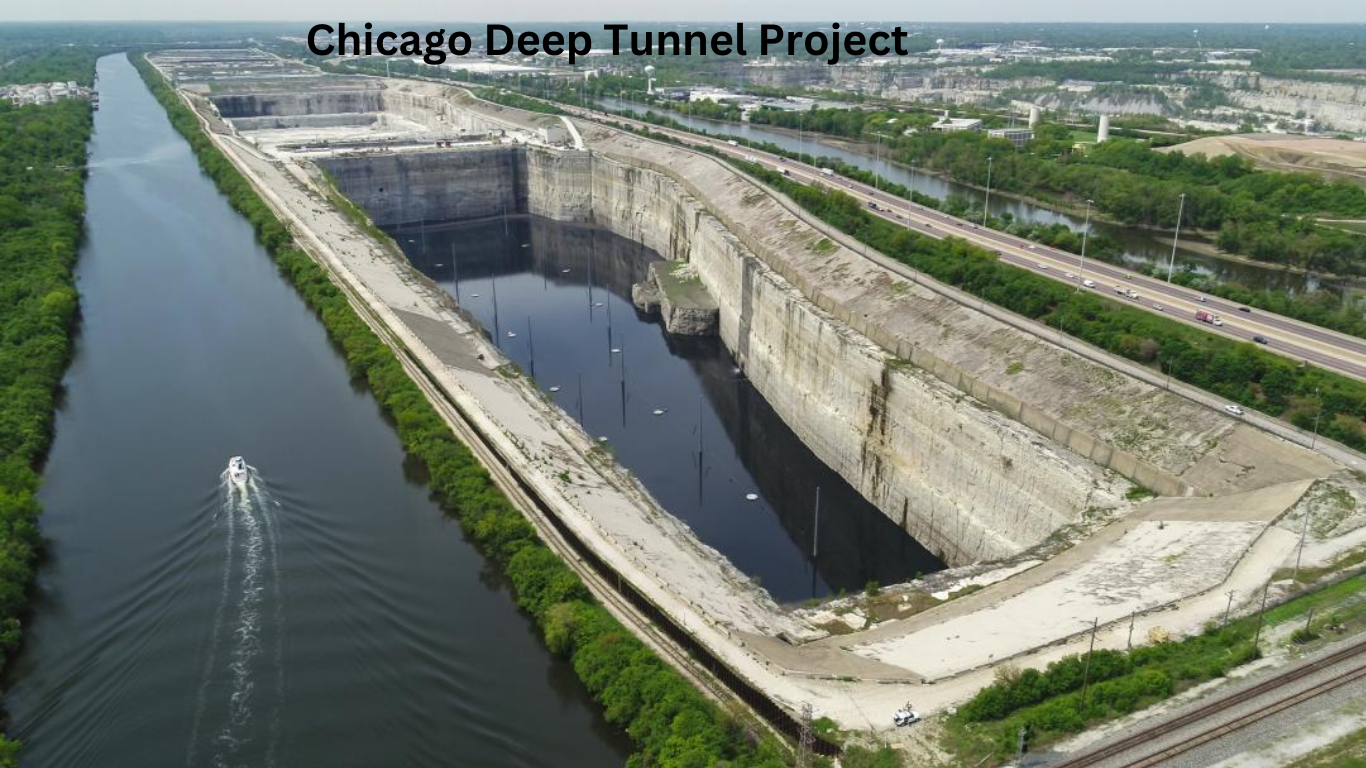Part 1: Why Chicago doesn’t flood , but Lahore and Karachi do
As new immigrants from Pakistan, whenever we see something good in developed countries, we often say, “I wish we had this in Pakistan.” The same goes for floods—why doesn’t Chicago flood, but Lahore and Karachi do every year?
The truth is, people in Chicago are just like us. The difference is they planned ahead to protect their city from floods, while we keep reacting after disasters strikes.
Let’s take a closer look at what they did—and what we can learn from them.
When I was landing at Chicago airport, it was raining heavily. As the plane got lower, I could see the tall buildings, the busy roads, and the beauty of the city. Cars were moving fast, people were going about their day. But one thing stood out—despite the heavy rain, there was no water standing anywhere. Chicago is surrounded by water—Lake Michigan and the Chicago River—yet the streets, parks, and buildings were not flooded.
It made me think of Lahore. A while back, I landed there during a rainstorm, too. But the scene was different. Most of the city looked like a flooded river. Cars were stuck, houses were underwater. A major city, drowning in rainwater.
That made me wonder—how does a city like Chicago, surrounded by water, stay dry even in heavy rain, while cities in Pakistan flood every year? What’s the difference in planning?
One day, I was driving on a big highway when I saw deep digging on both sides of the road. Huge trucks and heavy machines were working, pulling out dirt and making tunnels. I asked about it and found out it was a $4 billion project called TARP (Tunnel and Reservoir Plan). Its purpose? To protect Chicago from floods.
Chicago has an underground city—tunnels, railways, roads, and more. But to protect the city from floods, a massive tunnel system has been built. This project doesn’t just stop floods; it also cleans sewage water and makes it reusable.
Let’s learn more about this project.
WHAT IS TART, AND HOW DOES IT WORK?
In 1960, a powerful storm hit Chicago, causing massive destruction. The city’s drainage system couldn’t handle the water, so dirty sewage was dumped straight into Lake Michigan—the same lake that provides drinking water to the people. As a result, the water became polluted, and many people got sick.
After this disaster, the city formed a committee to find a solution and prevent such events in the future. After reviewing several ideas, they approved a project called TARP (Tunnel and Reservoir Plan), also known as the Deep Tunnel project.
The project started in 1975 and was one of the biggest engineering projects of its time. In simple words, TARP works in four main steps:
1) Deep Tunnels: There are four massive tunnel systems that total 110 miles. They are between 8 and 33 feet in diameter and between 150 to 300 feet deep. They collect and carry combined sewage and stormwater to reservoirs.
2) Reservoirs: The water collected is stored in massive reservoirs, the McCook Reservoir and Thornton Composite Reservation being a few of them. The reservoirs in total store more than 17.5 billion gallons of water.
3) Water Treatment: The stored water is shipped to reclamation plants of water, where it is subjected to treatment and purification before ultimately being released to water bodies.
4) Flood Control: Through the storage and back-up of stormwater and sewage, TARP avoids basement and street flooding and reduces the quantity of pollution that enters Lake Michigan.
Part 2: Karachi and Lahore—Where Monsoons Turn Cities into Swimming Pools
Karachi’s Annual Disaster
Karachi, Pakistan’s economic heart, drowns every monsoon. Why?
- Drains from the 1800s: Colonial-era pipes can’t handle modern crowds or rains.
- Concrete jungle: Buildings block natural water paths. (Ever tried pouring a bucket into a clogged sink?)
- Trash tsunami: Plastic bags and garbage choke drains.

Real impact: In 2022, floods killed 50+ people and cost businesses $1 billion.
Lahore’s Urban Flood Mess
Lahore’s issues are sneakier:
- The Ravi River problem: Once a natural flood buffer, now a dumping ground.
- “Copy-paste” housing schemes: Fancy neighborhoods built on old ponds and streams.
- No one’s in charge: 10+ agencies manage water… which means no one manages water.
Real impact: Floods spread diseases like dengue and cholera, overwhelming hospitals.
Part 3: Chicago vs. Pakistan—Why Can’t We Just Copy the Tunnels?
Let’s compare apples to oranges (or tunnels to… sandbags):
| Factor | Chicago | Karachi/Lahore |
| Planning | 50-year master plan | “Let’s fix it after the flood!” |
| Money | $4 billion (and counting) | Relies on World Bank loans |
| Governance | One agency runs the show | 10 agencies, 100 opinions |
| Public Role | Taxes fund the project | Citizens bribe officials to fix drains |
Part 4: Stealing Chicago’s Homework (But Making It Pakistani)
Low-Cost Wins
Pakistan can’t drop $ 4 billion on tunnels, but here’s what it can do:
- Rain gardens: Plant water-loving shrubs in parks and roadsides to soak up floods.
- Permeable pavements: Let rainwater seep into the ground, not flood streets.
- Clean your drains!: Lahore’s “Suthra Punjab” campaign cleared 12,000 drains in 2023—proof small steps work.
Big Dreams
- Reservoirs, not housing schemes: Lahore’s Ravi Urban Project aims to build lakes—but will politicians stay committed?
- AI-powered drains: Karachi is testing sensors to predict blockages. (Fancy, but let’s fix the basics first!)
Part 5: The Elephant in the Room—Corruption
Let’s be real: Pakistan’s flood funds often vanish faster than monsoon rain. For example:
- In 2022, Lahore’s mayor was accused of pocketing $2 million meant for drain cleaning.
- Karachi’s “anti-flood” budget bought SUVs for bureaucrats instead of suction pumps.
Solution: Involve citizens! Apps like “Fix My Street” let people report clogged drains—shaming officials into action.
Part 6: A Glimmer of Hope—Lahore’s Ravi River Project
Punjab’s government is trying to revive the Ravi River with:
- 3 new reservoirs to store floodwater.
- Strict zoning laws (no more houses on floodplains, maybe).
But critics say:
- It’s displacing farmers.
- Costs $50 billion (enough to build 12 Deep Tunnels!).
Conclusion: Will Karachi and Lahore Sink or Swim?
Chicago’s tunnels prove mega-projects work—if you’re patient and rich. Pakistan isn’t either, but it’s got hustle.
The bottom line:
- Start small (clean drains, punish corruption).
- Dream big (reservoirs, smart tech).
- Stop building shopping malls on rivers.
Karachi and Lahore don’t need a $4 billion tunnel. They need leaders who care more about people than pockets.










